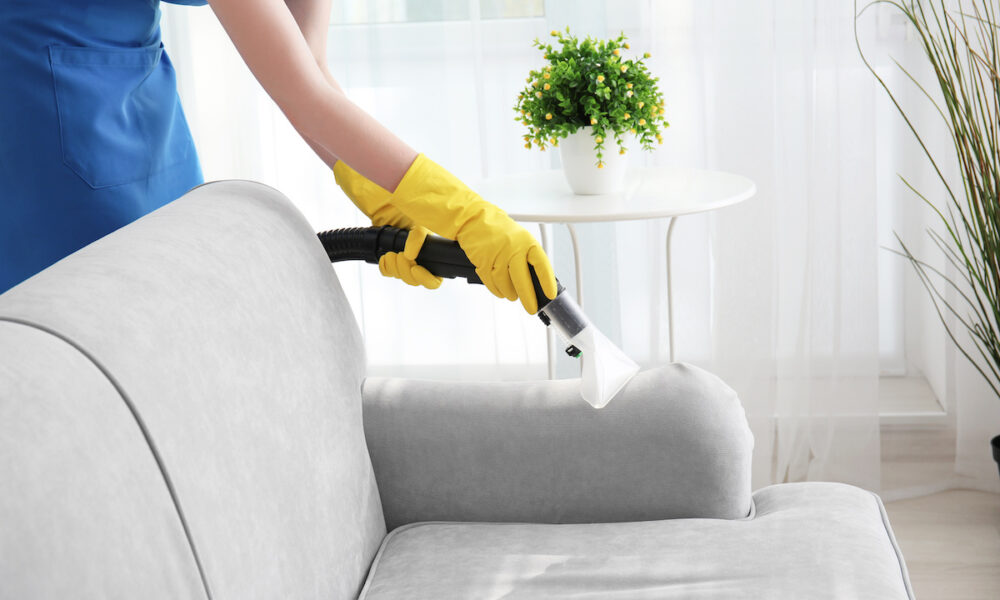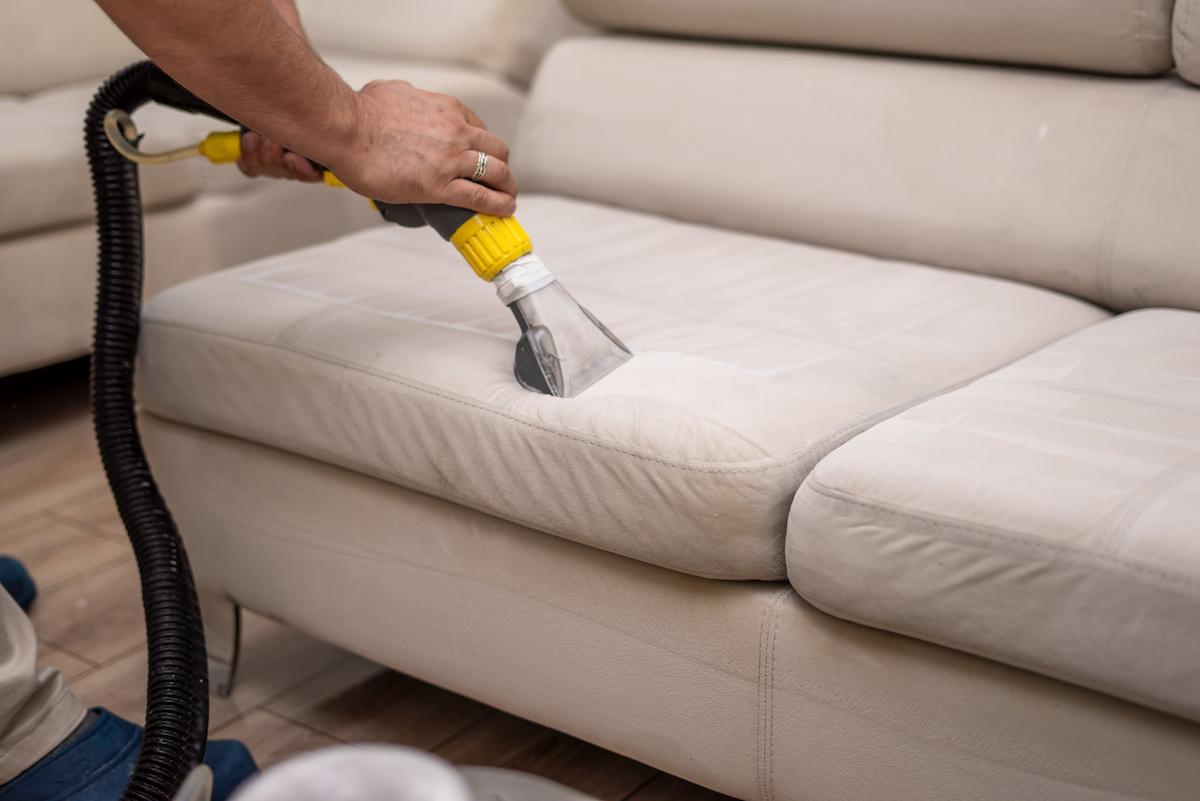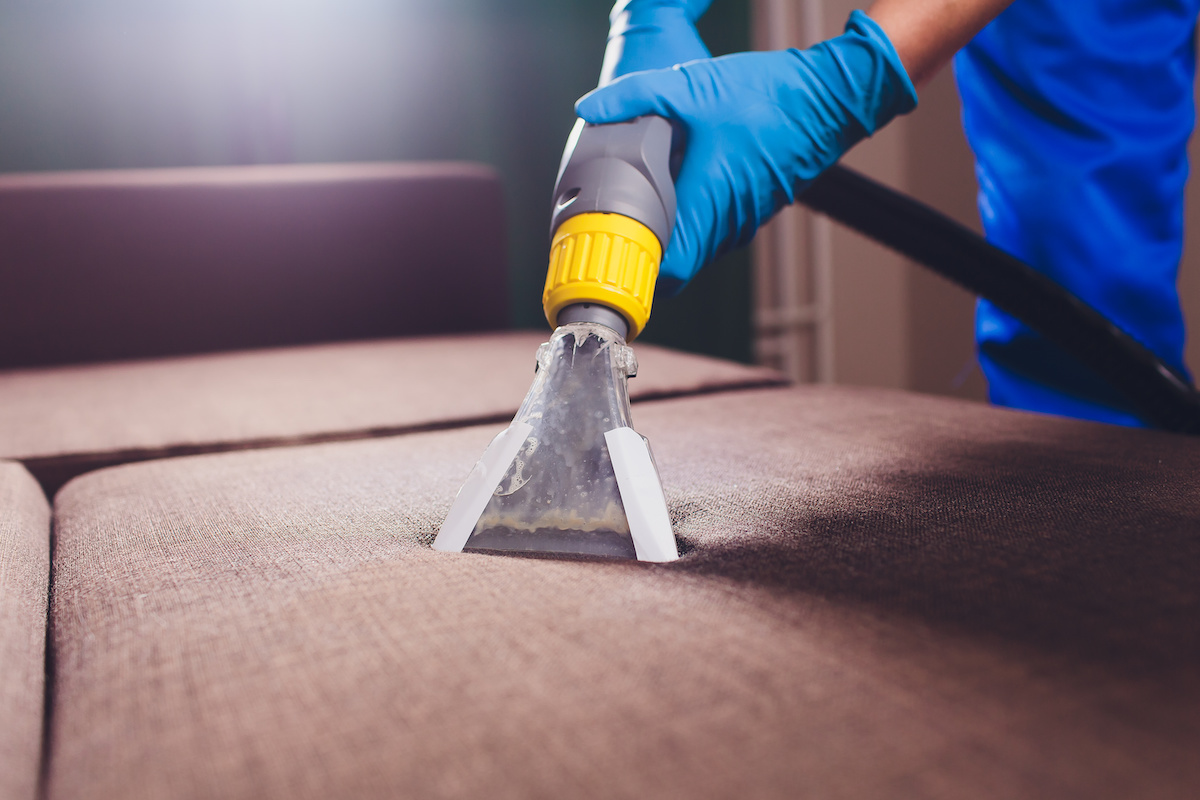
Upholstery plays a crucial role in our homes, adding comfort, style, and character to our furniture. However, over time, upholstered furniture can accumulate dirt, stains, and odors, diminishing its appearance and potentially affecting indoor air quality. Regular upholstery cleaning is essential to maintain a clean and healthy home environment.
In this article, we will explore the do’s and don’ts of upholstery cleaning, providing you with valuable tips to keep your upholstery looking its best.
The Do’s of Upholstery Cleaning
To keep your upholstery clean, stick to the do’s.
Regular Vacuuming
One of the most important do’s of upholstery cleaning is regular vacuuming. Upholstered furniture tends to collect dust, dirt, and pet hair, which can settle deep within the fabric fibers.
Vacuuming helps remove surface debris and prevents it from embedding further into the upholstery. When vacuuming, make sure to use the appropriate attachments for different surfaces and crevices. A brush attachment is suitable for most fabric types, while a crevice tool helps reach tight corners and crevices.
Spot Cleaning
Accidental spills and stains are inevitable, but immediate action can prevent permanent damage to your upholstery.
Spot cleaning is an effective way to tackle fresh stains. Start by blotting the stain gently with a clean cloth or paper towel to absorb as much liquid as possible. Avoid rubbing the stain, as it may spread or damage the fabric.
Then, use an appropriate cleaning agent specifically designed for your upholstery fabric and follow the manufacturer’s instructions. Test the cleaning solution on a small, inconspicuous area first to ensure it doesn’t cause any discoloration or damage.
Professional Cleaning
While regular maintenance is essential, professional upholstery cleaning is recommended to deeply clean and revitalize your furniture. Professional cleaners, like our team at Professional Carpet Systems, can effectively remove deep-seated dirt, stains, and allergens from your upholstery with their:
- Expertise
- Specialized equipment
- Cleaning agents
The frequency of professional cleaning depends on factors such as usage, household members (including pets), and fabric type. As a general guideline, it is advisable to have professional upholstery cleaning done every 12 to 18 months.
Testing Cleaning Products
Before applying any cleaning product to your upholstery, it’s crucial to test it on a small, inconspicuous area first. Different fabrics may react differently to various cleaning agents, and a patch test can help you avoid any unwanted damage or discoloration.
To do a patch test, apply a small amount of the cleaning solution to the test area and gently blot it with a clean cloth. If there are no adverse effects after a few minutes, it should be safe to proceed with cleaning the rest of the upholstery.

The Don’ts of Upholstery Cleaning
Avoid these don’ts to keep your upholstery in tip-top shape.
Using Excessive Water
Excessive water can be detrimental to upholstery fabrics, leading to:
- Shrinkage
- Color bleeding
- Potential structural damage
Avoid over-wetting your upholstery and always follow manufacturer guidelines regarding the use of water-based cleaning methods. When spot cleaning, use minimal water and blot the area gently instead of soaking it. If you choose to clean your upholstery using a steam cleaner, be cautious and ensure proper drying time to prevent mold or mildew growth.
Scrubbing Vigorously
Vigorous scrubbing may seem like an effective way to remove stains, but it can actually harm the fabric fibers. Rubbing vigorously can cause the fabric to:
- Fray
- Lose color
- Develop a worn appearance
Instead, use gentle cleaning techniques such as blotting or dabbing with a clean cloth. Allow the cleaning solution to penetrate the stain, and then gently lift it off the fabric. Patience and a gentle touch are key when it comes to upholstery cleaning.
Using Harsh Chemicals
Harsh chemicals, such as bleach or ammonia-based cleaners, can damage upholstery fabrics and pose a risk to your health. These chemicals may:
- Cause discoloration
- Weaken the fabric fibers
- Emit harmful fumes
It is advisable to choose mild and eco-friendly cleaning solutions specifically formulated for upholstery. Look for products labeled as safe for your fabric type, or consider making your own natural cleaning solutions using ingredients like vinegar, baking soda, or mild dish soap.
Ignoring Manufacturer Instructions
Each upholstery fabric has unique characteristics and requires specific care. Ignoring manufacturer instructions regarding cleaning methods and products can lead to irreversible damage.
When purchasing upholstered furniture, make sure to ask for care instructions from the manufacturer or retailer. These instructions will guide you on the appropriate cleaning techniques and products suitable for your specific upholstery fabric. Following these guidelines will help you maintain your upholstery’s appearance and longevity.
Upholstery Cleaning Tips and Tricks
In addition to following the do’s and don’ts of upholstery cleaning, there are several additional tips and tricks you can utilize to keep your upholstery looking fresh and well-maintained.
These tips focus on preventive measures, regular maintenance, and tackling specific challenges such as odors.
Preventive Measures
Furniture Covers and Throws
Using furniture covers or throws is an effective way to protect your upholstery from spills, stains, and general wear and tear. These removable covers can be easily washed or replaced, preserving the cleanliness and appearance of your upholstery. Choose covers that complement your decor and ensure they fit properly to provide full coverage and protection.
Scotchgard Protection
Applying a fabric protector, such as Scotchgard, can provide an extra layer of defense against stains and spills. Scotchgard forms a protective barrier on the upholstery fabric, making it easier to clean up accidental spills before they penetrate and stain the fibers. Follow the manufacturer’s instructions for proper application and reapplication intervals.
Avoid Direct Sunlight
Prolonged exposure to direct sunlight can cause fading and discoloration of upholstery fabrics.
To prevent sun damage, position your furniture away from direct sunlight or use window treatments such as blinds or curtains to regulate the amount of light entering the room.
Additionally, consider rotating your furniture periodically to ensure even exposure to sunlight.
Upholstery Maintenance
Brushing and Fluffing Cushions
Over time, upholstered cushions can become flattened and lose their shape. To restore their fullness and plumpness, regularly brush and fluff the cushions. Gently brush the surface of the cushions using a soft-bristle brush or a garment brush. This helps redistribute the filling and ensures a more even appearance.
Pet Hair and Lint Removal
If you have pets or frequently deal with lint and hair on your upholstery, there are several effective methods for removal. A lint roller is a handy tool for quickly picking up pet hair, lint, and fuzz from the upholstery surface.
Alternatively, you can use a slightly damp rubber glove or a rubber squeegee. Simply run the glove or squeegee over the upholstery in a sweeping motion, and the hair and lint will cling to the rubber surface.
Vacuuming Crevices and Hard-to-Reach Areas
When vacuuming your upholstery, don’t forget to pay attention to crevices, seams, and other hard-to-reach areas. Use a crevice tool attachment or a soft brush attachment to gently clean these areas. Dust, debris, and crumbs tend to accumulate in these spots, and regular vacuuming helps keep them clean and prevents them from causing further soiling or damage.
Odor Removal Techniques
Baking Soda
Baking soda is a natural and effective odor absorber. To remove unpleasant odors from your upholstery, generously sprinkle baking soda over the surface, focusing on areas with noticeable smells. Allow the baking soda to sit for a few hours or overnight to absorb the odors.
Finally, use a vacuum cleaner with a brush attachment to thoroughly vacuum the baking soda, along with the trapped odors, from the upholstery.
Fresh Air and Sunlight
If weather conditions permit, take advantage of fresh air and sunlight to naturally eliminate odors from your upholstery. Take the furniture outdoors or open windows in the room to allow proper ventilation. Fresh air circulation can help dissipate odors, while sunlight has natural sanitizing properties that can help neutralize smells.
Be cautious with delicate fabrics that may be sensitive to direct sunlight.
Fabric Refreshers
There are commercially available fabric refreshers that are specifically designed to eliminate odors from upholstery. These products typically come in spray form and can be applied directly to the upholstery. Follow the instructions on the product label for proper usage. Fabric refreshers not only help remove odors but also leave a pleasant scent behind.

Get Your Upholstery Cleaning Done Right
Upholstery cleaning is essential for maintaining a clean and healthy home environment. By following the do’s and don’ts of upholstery cleaning, you can ensure that your furniture remains in good condition, free from dirt, stains, and odors.
Regular vacuuming, spot cleaning, and professional cleaning are key elements in preserving the appearance and longevity of your upholstery. Remember to test cleaning products, avoid excessive water and harsh chemicals, and always follow manufacturer instructions.
By implementing these practices and incorporating preventive measures and maintenance routines, you can enjoy clean, fresh upholstery that enhances the beauty and comfort of your home. Upholstery cleaning is an investment in the longevity, aesthetics, and overall well-being of your furniture and household.
If you want to make sure your upholstery is cleaned correctly, reach out to our team at Professional Carpet Systems!